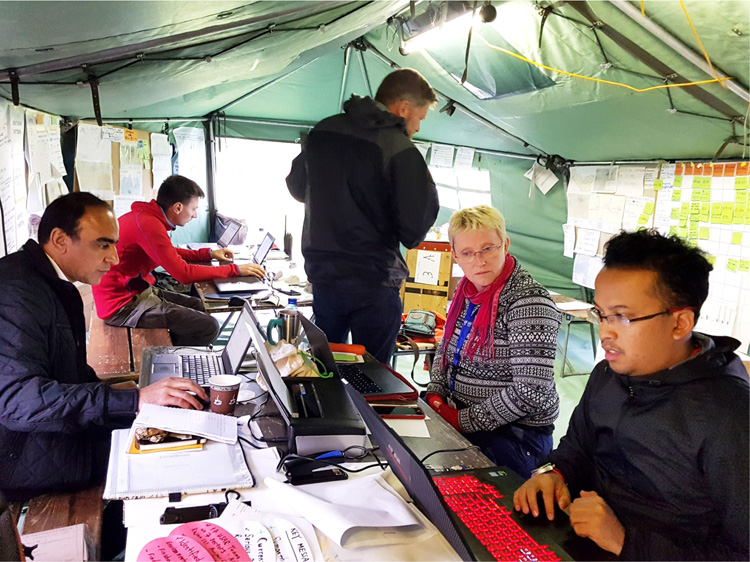
STRENGTHENING THE INTEROPERABILITY OF
ASEAN-ERAT AND UNDAC
SWITZERLAND, 29 APRIL – 11 MAY 2018
THE ASEAN REGION WAS REPRESENTED BY THREE MEMBERS OF THE REGION DURING THE UNITED NATIONS DISASTER ASSESSMENT AND COORDINATION (UNDAC) GLOBAL INDUCTION COURSE, HELD IN SWITZERLAND FROM THE 29TH OF APRIL TO THE 11TH OF MAY, 2018. THEIR INVOLVEMENT IN THE UNDAC TRAINING SERVES TO DEMONSTRATE THE STRENGTHENED PARTNERSHIP BETWEEN THE UNITED NATIONS AND ASEAN FOR INCREASING COLLECTIVE DISASTER PREPAREDNESS IN THE SOUTHEAST ASIAN REGION.
The participants, from Indonesia, Malaysia and Lao PDR, included two members of the ASEAN Emergency Response and Assessment Team (ASEAN-ERAT), thus their engagement in the UNDAC course formed another opportunity to test the interoperability between international and regional humanitarian mechanisms.
“The purpose of our involvement in the UNDAC course is to ensure quality learning process of UNDAC methodology and approach, increase the number of ASEAN-ERAT members who are also UNDAC-certified, as well as showcasing the quality of ASEAN-ERAT in collaborating together with other humanitarian actors within the UNDAC system,” said Dr. Mizan Bisri, the Disaster Monitoring and Analysis Officer of the AHA Centre, and one of the participants in the 2-week course.
At the completion of the course, numerous key-learnings could be identified, especially regarding points of improvement for adoption from UNDAC within ASEAN-ERAT processes. These included, amongst others, the strategic elements of coordination, access to assessment results, and back-end support mechanisms of UNDAC missions. A particular highlight is the strategic element of UNDAC system that forms a link between their assessment results and greater resource mobilisation, as well as public disclosure of such assessment results to increase the transparency of UNDAC and its standing in the wider humanitarian community. Therefore, dissemination of the assessment report produced by ASEAN-ERAT at the completion of each deployment/disaster response is increasingly important. While a response might not necessarily lead to greater resource mobilisation, having a public report will increase the visibility of ASEAN-ERAT, promote the values of ASEAN-ERAT, and potentially fortify the partnerships with global humanitarian partners.
The training also provided in-depth insights that may be integrated into the development of ASEAN-ERAT Level-2 curriculum, particularly related to rapid assessment, information management, logistics, humanitarian civil-military coordination and early recovery. The UNDAC holds a wide array of experiences designing back-end support with partner organisations, both within and outside of the UN system, particularly focused towards assessment and analysis, and information management aspects. Based on these experiences, within the Southeast Asian context, there are opportunities to enable ASEAN-ERAT members to provide remote support for ongoing missions on the ground.
During the UNDAC global induction course, ASEAN-ERAT was highlighted as a key regional partner for responding on the ground, capacity building and inter-operability preparedness. The ongoing participation between both ASEAN-ERAT and UNDAC within each other’s respective induction courses and exercises was highlighted and praised. UNDAC members also evidenced awareness that, in the case of disasters in ASEAN region, there is a great likelihood that a Joint Operations and Coordination Centre of ASEAN (JOCCA) would run in parallel to the Onsite Operations and Coordination Centre (OSOCC). Both centres would serve as coordinating platforms and provide support to the affected countries to manage incoming assistance. The existence of a Standard Operating Procedure between the OCHA/UNDAC and AHA Centre/ASEAN-ERAT, tailored to the respective UNDAC and ASEAN-ERAT mission cycles, was highlighted as a good institutional approach to ensure quality response for supporting the needs of the affected population. Overall, better strategic, tactical and operational linkages between ASEAN and UN agencies are fundamental to the holistic implementation of One ASEAN One Response, both for responding inside and outside the region. As of May 2018, there are 18 out of 252 ASEAN-ERAT members who had been trained and qualified as UNDAC personnel, with plans to continuously increase these numbers, in line with the ASEAN-ERAT Transformation Plan as part of the AHA Centre Work Plan 2020.
Written by : Mizan Bisri | Photo : AHA Centre, United Nations





